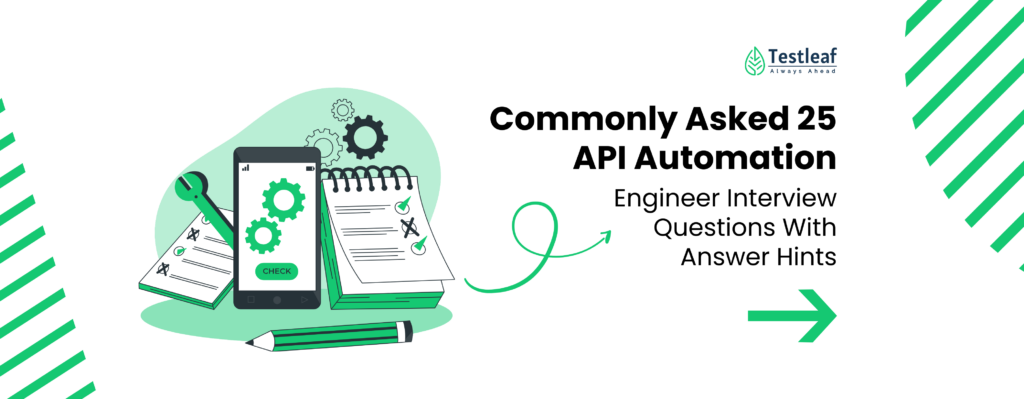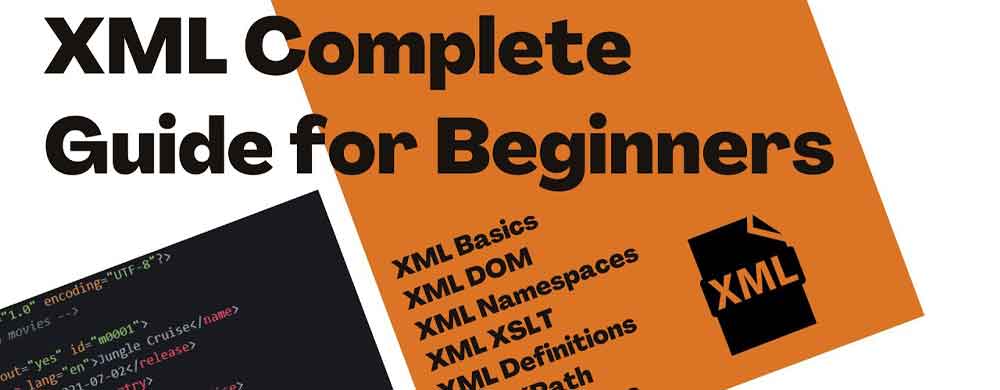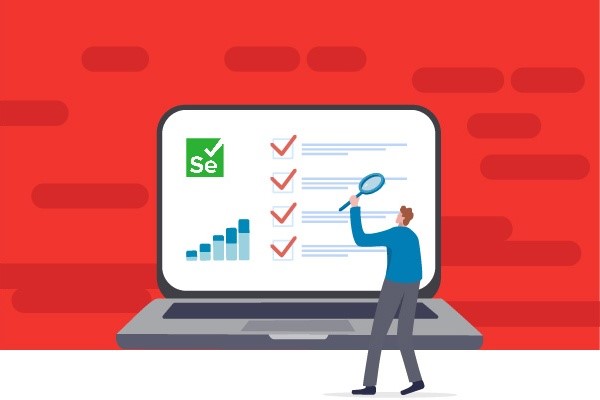In today’s tech landscape, the role of an API Automation Engineer is critical for ensuring the seamless integration and performance of APIs within various software systems. Preparing for an interview in this field involves understanding a wide range of topics, from basic concepts to advanced testing strategies. Here, we provide 25 commonly asked interview questions along with answer hints to help you get ready for your next API Automation Engineer interview.
What are your day-to-day responsibilities as an API Automation Engineer?
Interview Question : Could you walk me through a typical day in your role as an API Automation Engineer?
Candidate: Sure! My day usually starts at 9 AM with checking JIRA for assigned API tickets. Around 9:15 AM, I analyse the test report for over 1100 API tests, which involves classifying defects, identifying fixes, and planning for future improvements. By 9:45 AM, I check my emails and then join the daily standup meeting at 10 AM with my 4-member team.
From 10:15 AM, I focus on debugging failed tests and writing new ones. This includes working with contract documents like Swagger, building services in Postman, and utilizing the RestAssured framework. I push the code to the Git repository and schedule Jenkins pipeline runs at night. Typically, I dedicate about 90 minutes to develop, debug, and test each API. My day wraps up with a standup meeting at 7:30 PM to review progress.
Join API Automation Course in Testleaf
How do you differentiate between RESTful APIs and Event-Driven APIs in real-time scenarios?
Interview Question : Can you explain the difference between RESTful APIs and Event-Driven APIs with an example?
Candidate: Certainly! RESTful APIs are synchronous, meaning each request waits for a response before moving forward. For instance, if you’re ordering food online, each request (like fetching the menu or placing an order) is processed and responded to sequentially.
Event-Driven APIs, on the other hand, are asynchronous. They process requests and notify you when an event occurs. For example, when uploading a file, the server notifies the client once the upload is complete, allowing other processes to continue in parallel.
Can you describe the different status codes you have used and what they signify?
Interview Question : What status codes have you encountered in your API testing, and what do they indicate?
Candidate: I’ve worked with a range of HTTP status codes. Here’s a quick overview:
- 100s (Informational): Indicate that a request has been received and is being processed.
- 200s (Success): Confirm that the request was successfully processed (e.g., 200 OK).
- 300s (Redirection): Indicate that further action is needed to complete the request.
- 400s (Client Errors): Show that there was an error with the request (e.g., 404 Not Found, 400 Bad Request).
- 500s (Server Errors): Indicate that the server failed to fulfil a valid request (e.g., 500 Internal Server Error).
Read this article to know Most Common Used HTTP response status codes.
Interview Question : In the context of API security, what is the difference between authentication and authorization?
Candidate: Authentication verifies the identity of a user, allowing them into the system (like guest, admin, super admin). Authorization determines what resources the authenticated user can access and what actions they can perform. For example, at a security gate, authentication would confirm if a person is a resident, service worker, or delivery person, while authorization would control their access within the premises.
Learn more about What is OAuth and How it works.
When verifying API responses, what key aspects do you check?
Interview Question : What do you typically verify in the response of an API?
Candidate: When verifying API responses, I check several key aspects:
- Response Status Code: Ensuring it’s in the 200-299 range.
- Response Message and Headers: Validating that the expected content and metadata are present.
- Response Time: Checking that the API meets performance benchmarks.
- Security Checks: Ensuring tokens and sessions are managed correctly.
For example, in a UK banking risk product, after posting a token, I verify that subsequent requests with expired tokens are properly rejected to ensure security.
Can you explain the differences between PUT, PATCH, and POST methods with examples?
Interview Question : How do you differentiate between PUT, PATCH, and POST methods in API testing?
Candidate:
- PUT: Replaces the entire resource. For example, updating a user profile completely.
- PATCH: Updates specific elements of a resource. For instance, changing just the user’s email address.
- POST: Creates a new resource. For example, adding a new user to the database.
How do you handle nested or chained API calls in automation?
Interview Question : How do you automate nested or chained API calls?
Candidate: I follow these steps:
- Identify dependencies among requests.
- Build non-dependent requests first.
- Parse key-value pairs from their responses.
- Construct dependent requests using parsed data.
- Verify the final response.
For example, logging into a system may require fetching user details and then requesting a user avatar based on those details.
What steps do you take when a backend test fails?
Interview Question : How do you debug when your backend test fails?
Candidate:
- Collect all response information.
- Retry tests to confirm consistency.
- Check logs in Postman or RestAssured and server logs (like Splunk).
- Collaborate with developers using the collected logs.
- Triage defects with relevant teams (data issues, application code issues, or infrastructure problems).
Can you explain the difference between OAuth v2 and JWT tokens?
Interview Question : What are the differences between OAuth v2 and JWT tokens?
Candidate: OAuth v2 uses client secret and client password for authorization, providing a more structured flow for secure data access. JWT (JSON Web Tokens) are self-contained tokens that include the necessary claims for authentication and can be easily transmitted between parties.
What is a URI and how does it differ from a URL?
Interview Question : What is a URI, and how is it different from a URL?
Candidate: A URI (Uniform Resource Identifier) identifies a resource, while a URL (Uniform Resource Locator) provides the address to access a resource. Essentially, all URLs are URIs, but not all URIs are URLs.
What is statelessness in REST APIs?
Interview Question : Can you explain the concept of statelessness in REST APIs?
Candidate: Statelessness means that each request from a client to a server must contain all the information needed to understand and process the request. The server does not store any client context between requests, ensuring each request is independent.
Which HTTP methods have you used in your API testing?
Interview Question : Which HTTP methods have you used in your API testing?
Candidate: I have used various HTTP methods, including:
- GET: Retrieve data.
- POST: Submit data for processing.
- DELETE: Remove data.
- PUT: Update/replace data.
- PATCH: Modify specific data elements.
- HEAD: Retrieve headers without the body.
- OPTIONS: Describe communication options for the target resource.
How do you construct API tests for a new feature?
Interview Question : How do you construct API tests when a new feature is introduced?
Candidate:
- Read the contract document.
- Identify all related APIs.
- Determine dependencies and integration points.
- Start with positive tests, then edge cases.
- Create negative functional tests.
- Build performance tests (e.g., Gatling).
- Implement security tests.
What do you do when there is no contract document available for an API?
Interview Question : How do you approach testing when there is no contract document available?
Candidate:
- I prefer to refuse testing without a contract.
- Alternatively, I create the contract document for critical APIs.
- I test based on APIs exposed through interceptor tools.
What are the core components of an HTTP request?
Interview Question : What are the core components of an HTTP request?
Candidate: The core components include:
- Endpoint URL
- Authorization credentials
- Parameters
- Headers
What is the difference between idempotent and safe methods in HTTP?
Interview Question : Can you explain the difference between idempotent and safe methods?
Candidate:
- Idempotent Methods: Multiple identical requests yield the same result (e.g., PUT, DELETE).
- Safe Methods: Do not alter the state of the server (e.g., GET, HEAD).
How do you test APIs when the development is not complete?
Interview Question : How do you handle testing APIs when the development is not complete?
Candidate: I use mock services or doubles to simulate the API behaviour, allowing me to proceed with testing even if the development isn’t finished.
What is your API testing strategy?
Interview Question : Can you describe your API testing strategy?
Candidate: My strategy includes:
- Testing independent APIs first.
- Testing dependent APIs within the same service.
- Testing integration APIs within the same application.
- Using mocks to test external integration APIs.
How do you handle multiple cookies in Rest Assured?
Interview Question : How do you handle multiple cookies in Rest Assured?
Candidate: I manage multiple cookies using a headers map, which allows me to handle various cookies efficiently.
What challenges have you faced in API automation?
Interview Question : What challenges have you encountered in API automation?
Candidate: Common challenges include:
- Poorly written or non-existent contracts.
- Unavailability of mock services.
- Designing integrated API tests across multiple services.
How do you verify JSON response contents?
Interview Question : How do you verify JSON response contents?
Candidate: I use Postman tests with JavaScript code and RestAssured with the HamCrest matching library to traverse and validate JSON response contents.
How do you write API tests for a complex system like Google Payment Gateway?
Interview Question : How would you approach writing API tests for something as complex as the Google Payment Gateway?
Candidate: I use a test case enumeration pattern and state transition techniques to ensure comprehensive coverage and robustness in the testing process.
How do you perform performance testing with APIs?
Interview Question : How do you conduct performance testing for APIs?
Candidate: I focus on:
- Individual API response times against SLAs.
- Performance tests that are short-duration and metric-focused.
- Load tests for long-duration (2-6 hours) batch processes.
- Stability tests conducted overnight.
What are the key components of your API testing framework?
Interview Question : Can you describe the key components of your API testing framework?
Candidate: Key components include:
- Test data in JSON format.
- Reporting tools (e.g., ReportPortal).
- Base libraries like RestAssured.
- Hooks and runners for test execution.
- Test scripts to validate functionality.
How do you run Postman collections via Jenkins?
Interview Question : How do you run Postman collections in Jenkins?
Candidate: I use Newman, a command-line tool that allows me to run Postman collections in Jenkins pipelines, ensuring continuous integration and delivery.
Are you preparing for an interview on automation frameworks? We’ve got you covered with the key questions you need to know. Whether you’re experienced or just getting started, these questions can help you succeed.
For more details, visit TestLeaf’s blog on automation framework interview questions.







